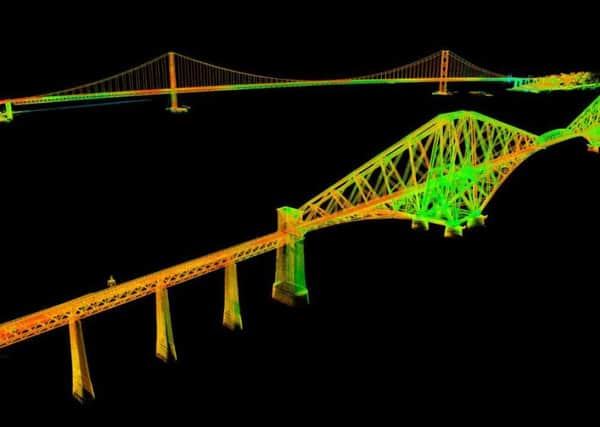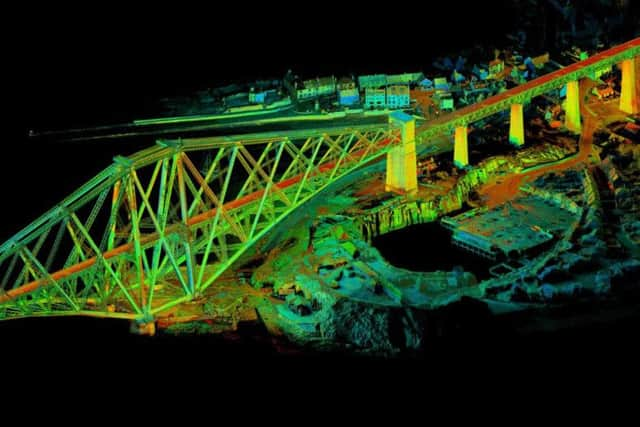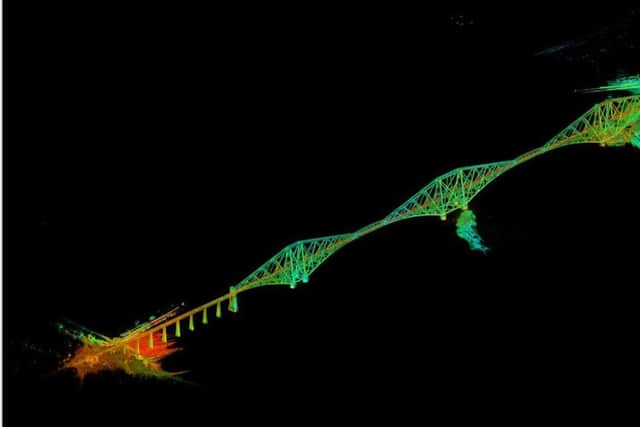3D Scans of Forth Bridges to be used in educational game
This article contains affiliate links. We may earn a small commission on items purchased through this article, but that does not affect our editorial judgement.


DOWNLOAD THE EDINBURGH EVENING NEWS APP ON ITUNES OR GOOGLE PLAY
The £300,000 scanning project was one of the most challenging and complex 3D scans undertaken anywhere in the world and has amassed a data-cloud of many billions of dimensionally accurate points on the structures of the Forth Bridge, Forth Road Bridge and the partially built Queensferry Crossing.
Advertisement
Hide AdAdvertisement
Hide AdA grant of £425,000 from Transport Scotland has enabled Scottish digital heritage experts to start work on learning games, augmented reality apps, real-time interactive models for virtual headset tours and video fly-throughs for release in 2018, all aimed at developing STEM skills among pupils in Scottish schools.


The images and scans will also provide a virtual reality tour of the bridge.
Transport Minister Humza Yousaf said: “The Forth Bridges represent Scotland’s industrial past, creative present and our dynamic and innovative future. They are the pinnacle of world-leading design and engineering and it’s right that we conserve and protect them and also seek to inspire and educate the young engineers of the future.
“If the bridges are a globally unique showcase of Scotland’s world-class engineering skills, this amazing 3D scanning project also showcases the world-leading design, research and innovation in our Higher Education institutions.
Advertisement
Hide AdAdvertisement
Hide Ad“The possibilities for this comprehensive digital data are almost endless. It allows the production of detailed information and tools for conservation, educational resources, improving accessibility and delivering virtual records to help health and safety training as well as promoting tourism.


“It is already delivering early benefits. Our commitment to the work was a crucial element in securing World Heritage status for the Forth Bridge last year (2015). In addition, the Forth Road Bridge scans had only just been undertaken when maintenance issues forced the prolonged closure of the structure last winter. I understand the engineers were able to use the scans as part of diagnosing and solving the problem with the truss-end links.
“But now, rightly, our focus is education and creating learning tools to educate and inspire the young engineers of the future.”
The laser scanning work began in May 2015 and involved a total of 90 days digitally documenting the bridges on foot, from ropes, vehicles and boats.
Advertisement
Hide AdAdvertisement
Hide AdAlastair Rawlinson, Head of Data Acquisition at The Glasgow School of Art and CDDV said: “Laser scanning each of the three bridges has posed unique challenges for our team. We have had to use our combined experience, gained through digitally documenting globally iconic structures such as the Sydney Opera House and Mount Rushmore to create innovative methodologies to allow us to capture these incredible bridges in great detail.


“We will now use this specialised 3D dataset to develop interactive learning resources based on advanced gaming technologies and virtual reality to make the information accessible to school children across Scotland and beyond.”